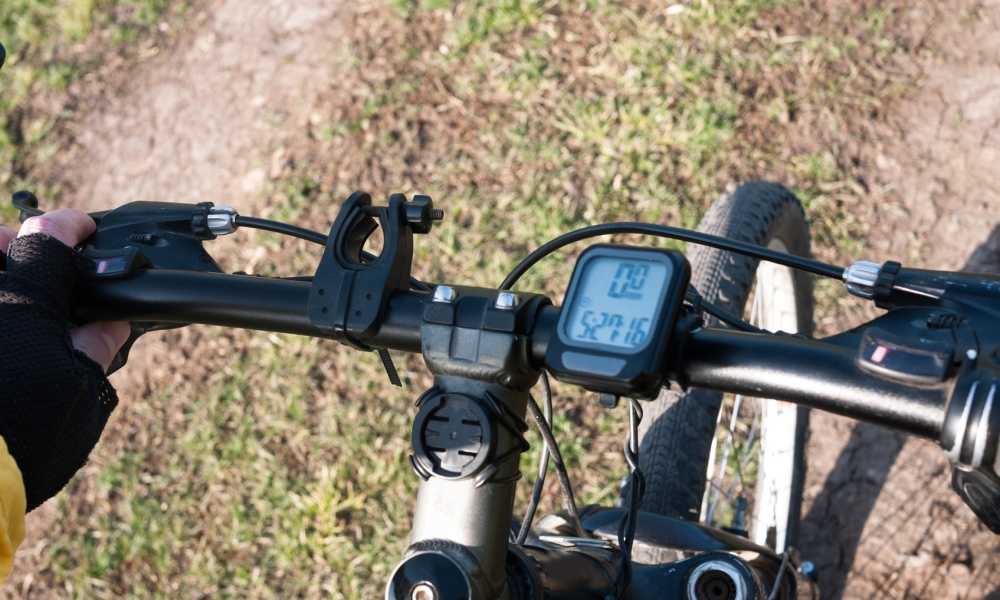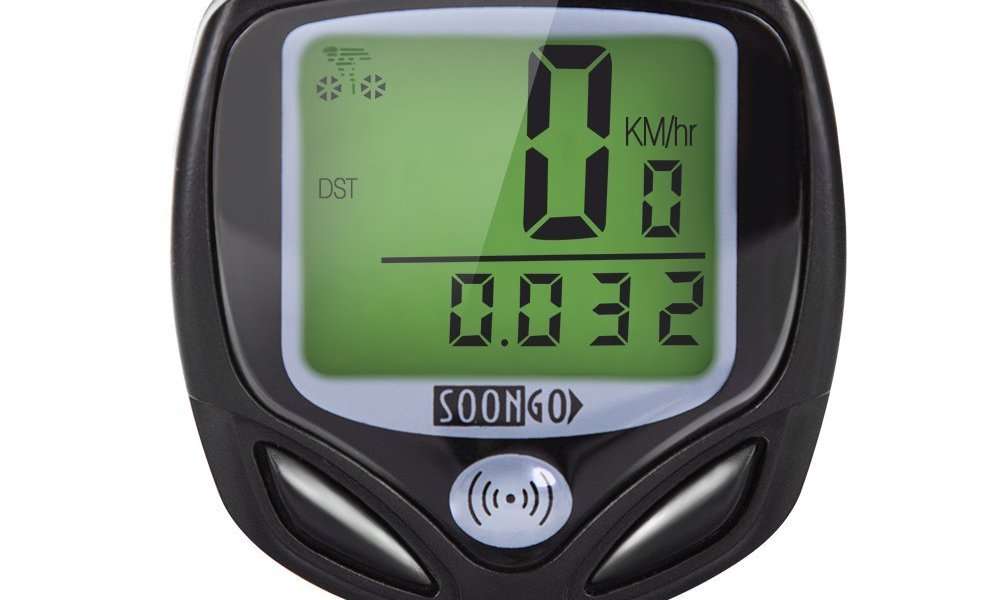- You are here:
- Home »
- Bike Computers
Category Archives for Bike Computers

Which Bike Computer Should I Buy?
A bike computer provides data and feedback as you ride. There are different types available for the casual rider, the competitive rider, and the enthusiast. These should not be confused with fitness monitors, though some bike computers now incorporate similar features.
Primary Features to Look For
- Casual Rider: the device features should include the distance you have traveled, time, and speed. It should also include the total time you spent on the bike and how far you’ve ridden.
- Enthusiast Rider: the most important details are top speed, average speed, odometer statistics, and trip distance.
- Competitive: you’ll want all the features mentioned above as well as power output, elevation, heart rate, and cadence.
Types of Bike Computer Sensors
There are two major types you’re going to come across, GPS and magnetic.
- Magnetic sensors are comprised of a magnet connected to the wheel spoke. The spoke turns along a sensor hooked on the front fork. Magnetic bike computers have a long battery life. However, they don’t have GPS and cannot be recharged.
- GPS devices have more features and data. They are more customizable and can be used on various bikes. However, they are heavier and cost more.
Bike Computer Data Transmission
There are two options, wired and wireless.
- Wired magnetic sensors are affordable and lighter, and they’re easier to setup. However, swapping among bikes is not easy. Wires can also get tangled, which is a risk if you’re on a mountain bike.
- Wireless types are more expensive than wired models, but they’re easier to configure and less of a hassle. Wireless GPS units are heavier than regular magnetic sensors.
Other Features to Look For
You may also want to look for these features:
- Backlight: Do you like to ride at night? You’re going to need a backlight to read the data.
- Battery Life: The longer the battery life, the better, of course. Magnetic sensors frequently use a CR2032 which is good for a couple of years depending on usage. GPS units can be recharged, and a single charge is usually good for 20 hours.
- Screen: Bike computers may have one or multiple screens. The screen may be fixed or there may be options available.
- Transferring Data: Do you want to put the data on your computer or online for record keeping and/or analysis? Then you’ll want a data transfer feature.
- Compatibility: Do you plan to use the device on other bikes? Look for a bike computer that has universal compatibility or at least works with both your bikes.
- Ease of Use: All those extra features are nice, but what’s the use if the device is difficult to operate?
- A mount is necessary if you want to put the computer on your bike. Usually it is included with the package, but there are aftermarket mounts if you want to customize its placement on your bike.
- Easy to Read: The numbers and data must be easy to read. You don’t want to have to stop when you’re riding, so large numbers are a must.
Bike Computer FAQ
Q: How accurate are bike computers?
A: GPS units are often thought to be more accurate than magnetic models, but if you can provide your tire’s size, you will get accurate results with magnetic sensors.
Q: What happens to my data when I replace or recharge the battery?
A: Your data won’t be lost, but you may need to reset the settings.
Q: Which brand is the best?
A: It depends on what you’re looking for. Rather go with a specific brand, it is better to go with one that has the features you’re looking for.
Q: Are all bike computers water resistant?
A: No, but most won’t get damaged with a bit of water splash every now and then.
Other Considerations
Apart from what we already mentioned, you also have to consider the following before buying a bike computer.
- What type of rider are you? Are you new to cycling? Do you ride causally? Do you ride for competition? Are you serious about fitness? The type of rider you are is going to determine what kind of bike computer you’re going to use.
- Long term consideration: Do you often upgrade your equipment? Do you see yourself content with a basic computer? Think also of your future plans when buying a bike computer.
- Durability: Even the best riders aren’t immune to crashes, so look for a computer that can take hits.
- Waterproof: Do you like to ride in the rain or muddy, wet terrain? If so, you’ll want a waterproof unit.
- Warranty: A long, comprehensive warranty is always preferable.
Conclusion
As you can see, there are a lot of features and factors you need to look into. It’s important that you delve into it, though, because it’s going to make a big difference when you use the device. The amount of time you put in the research is going to ensure that you get the right one for your bike.

What Bike Computers Do the Pros Use?
Professional riders use different types of bike computers. There is no one preferred brand. It is more about deciding which is appropriate for the moment. Pro riders don’t necessarily need to have the most data from their bike computers. For them, accuracy is the most important aspect.
If you’re a pro and looking for a quality bike computer, you may use the following criteria to guide your purchase.
What Pro Riders Look for in a Bike Computer
While pros each have features they individually consider necessary, some are almost always found on their list.
At the very least the computer must record your speed, distance you have traveled, total distance covered, average speed and total time. A clock is also handy. Pros also need to keep tabs on their top speed and how much progress they’re making.
Apart from the basic features, you also want more advanced tools like a GPS, cadence, a pulse/heart rate monitor, etc. You will find these on a lot of pro level bike computers.
Types of Bike Computers
There are many kinds of bike computers you can choose from, but the following are the most common.
- Regular Bike Computer: These are computers designed for use on bikes. You mount this on your bike and it displays real time data as you ride. They are weatherproof and most are water resistant. They’re easy to mount and inexpensive. However, they can only be used on bikes.
- Health Monitors: Some bikes allow you to mount a fitness watch or monitor on the handlebar. These devices are weatherproof, and they’re also versatile. The drawback with fitness monitors is they’re not as compact and they are more vulnerable to damage.
- Mobile Device App: Cycling apps have lots of features. With a few taps and swipes, you’ll have access to your data. However, these devices re not waterproof and need a special mount to attach on your bike.
Between the three options, the bike computer is the best for several reasons. A smartphone app is too risky to use on your bike. You’ll need to purchase a heavy duty case, and keeping the screen and GPS on eats up a lot of battery.
More than that, mobile devices are more expensive than bike computers. If you crash your bike, you risk destroying your smartphone or tablet. The same problem applies when you use a fitness monitor. For these reasons you’ll be better off with a bike computer.
Which Pro Bike Computer is Right for You?
To answer this question, you have to consider what type of pro rider you are.
- What type of data do you want to record? If you just want to record your speed, time, and distance covered, even a basic bike computer will suffice.
- If you want to record everything including the smallest details, you’ll need an advanced bike computer with all the bells and whistles.
- Just like with anything else, the more expensive the computer, the more features it has. However, there are now budget bike computers available.
- Pro riders take their bikes on off-road adventures and rugged terrain, sometimes in rainy weather. If you belong in this category, you’ll need a heavy duty computer.
- : High end bike computers provide enhanced functions, but the features vary by product. It’s up to you to decide if they’re essential.
- A long battery life is essential for professional riders.
- Look for a powerful backlight, data transfer, and computer compatibility if you want to study your data on a laptop.
- A lightweight compact design is also ideal.
GPS or Magnetic?
Some pros use GPS and some use magnetic. Each type has its pros and cons. The gist is that magnetic sensors cost less, are easy to mount, and have long lasting batteries. GPS systems provide more customizable options and have more features. They’re also more expensive.
So which of the two is better suited for the pros? If you’re on a budget and don’t want to have to recharge batteries (magnetic sensor batteries are good for 8 to 12 months), a magnetic sensor will do.
If you want a customizable model with lots of data recording, then a GPS bike computer will be more to your liking. These are also more suitable if you want to use the device on more than one bike. However, it is possible to mount magnetic sensors on other bikes too.
Pro bike computers are almost always wireless. There are wired magnetic sensors but they’re impractical for pros to use. GPS enabled sensors are wireless by nature.
Conclusion
As we have shown here, there are a lot of factors that need to be considered if you’re going to buy a professional level bike computer. Since the pros use many types of bike computers, it is up to you to do the research and pick the right one for the situation.

SOONGO Bike Computer Speedometer Review
Is the Soongo bike computer really going to accurately monitor your stats as you ride? If you already have a bike computer, is this worth an upgrade? After a thorough review, we have to say that the answer is yes. This is a high quality product and provides a lot of benefits which both pro riders and casual riders will appreciate.
Features
- The Soongo keeps track of your data. It comes with several functions including current speed, top speed, scan, odometer, and maintenance alert.
- The compact design allows you to use the Soongo on almost any bike without adding weight or compromising function.
- The design is friendly for beginners.
- The large display makes it easy to read the figures.
- You can set the backlight to green or white depending on how you want to read the data. Whether it is green or white, you will have an easy time reading the stats, even if it is nighttime.
- The waterproof design allows you to use the Soongo even in less than ideal weather.
- The LCD display is large and clear, so you don’t have to lean in just to read the results.
- The unit is also compatible with a wide array of bicycles. You can use this on regular bicycles as well as mountain bikes and road bikes. No matter what bike you use, the installation process is the same.
- Other functions of the Soongo include total traffic mileage, elapsed and riding time, and auto circulatory function.
- The Soongo also lets you change the settings so it displays either kilometers or miles.
- The package includes the computer, user manual, cable tie, battery, stickers sensor, magnet, and gauge stand.
Pros
- Accurate results
- Waterproof
- Compact design
- Easy to use
Cons
- The clock is a bit small
- Backlight quality isn’t as good as on other bike computers
Performance and Usage
The SOONGO Bike Computer Speedometer has a lot of functions, but thankfully the unit is easy to use. You don’t need to learn any complex controls either. After you have mounted the unit, the Soongo will keep track of your performance automatically. It has more features than your standard bike computer, but it is not hard to figure out.
The Soongo is also one of the more durable units we have come across. It can withstand a lot of punishment, and being waterproof means it won’t suffer any damage from a splash every now and then. A lot of bike computers claim they are waterproof, but this is one that really lives up to that.
The instructions are decent and you will have little trouble mounting the Soongo on your bike. The zip ties feel a little flimsy, but when installed properly, they should hold up.
When everything is taken into consideration, we can say that the Soongo performance is worth the price. It is very reliable and its accuracy is exceptional. We also like that it is lighter than other bike computers so it is not going to be a burden when you use it. And as we have pointed out, the durability level is also top of the line.
Should You Buy it?
If you don’t need a fancy unit with all kinds of bells and whistles, then the Soongo is one that you will like. It covers all the basics like speed, distance, average speed, and so on.
It also does an outstanding job of making sure the data is accurate. There aren’t a lot of ways to customize the unit, but it is not really necessary given that the features are well in place.
The unit is also very responsive: no need to mess around with the features. The tracking is automatic. This says a lot about its versatility and why it is a good choice for beginners and advanced cyclists alike.
This is also a good bike speedometer for those who need an accurate and inexpensive way to track their performance. It doesn’t have any fancy features like a heart rate monitor, but if you don’t need that, the Soongo will work just fine.
Another reason to consider the Soongo is that it uses power very well. It doesn’t use AAA batteries; it uses A27. Uncommon, yes, but it is not like you’re going to have problems finding a replacement for it. Even though it is A27, the response time is very good compared to others in its range.
Verdict
There are a lot of bike computers out there, with prices and features ranging from the good to the bad. We can say with certainty the SOONGO Bike Computer Speedometer is one of the better ones, and in terms of performance it is right there among the best we have seen.
If you are new to bike computers or just want a better data tracker, then you cannot go wrong with the Soongo.

Sigma Sport BC5.12 Wired Bicycle Computer Review
Is the Sigma Sport the ideal bicycle computer? At first glance the Sport seems to look the same as any other bike computer, so is there anything about the Sport that makes it stand out? To find out, we conducted a detailed review to learn as much as we could about it.
Features
- The unit has five functions so you can keep track of your progress. Its functions include ride time, total distance, speed, and distance you’re traveling.
- Large, easy to read display.
- The digits are large so it’s easy to scan the data, even while you bike.
- You can program the Sport and customize the results.
- The installation has been simplified so even a novice can use it.
- Some models come with an optional USB docking station.
Pros
- Provides accurate results
- Easy to use
- Mounts on different bikes
- Quick and easy installation
Cons
- Unit is always turned on
- Doesn’t have Wi-Fi compatibility
Performance and Usage
If you have used magnetic bike computers before, you know that they must match the tire’s size to give accurate results. As it is, the Sigma Sport BC5.12 Wired Bicycle Computer is compatible with 24 inch wheels – the most commonly used by bikes – as well as other tires. By adjusting the Sport accordingly, you’ll get pinpoint results.
The compact design makes it simple to mount the Sport, especially when compared to larger bike computer units. When it comes to accuracy the Sport is right on, and the display means you can quickly read the results as you go. As an odometer / speedometer combo, the Sport gets the job done and is as accurate as more expensive units.
The battery lasts a long time and is going to save you money and energy. However, it won’t last forever. It is not hard to replace, though you’ll need to put the settings back in. This should only take a few minutes, though, and should not be an issue.
The Sport is also durable. Once mounted on your bike, it will remain there. It can take more than a few hits and no matter what terrain you’re riding on, the results are accurate. The previous models had several buttons, which made it confusing for beginners to use. However, the design upgrade for the Sport has eliminated this problem. You now have only one button to use.
It’s easy to test the accuracy of the Sport – just use it on a measured course and you’re going to see that the results are accurate and on the mark. Based on accuracy alone, it is comparable to more expensive models and should serve the needs of pro cyclists. Even if you are not a techie, it’s only going to take a few minutes to install this.
The Sigma Sport isn’t perfect. The USB docking port is not available on all models, but really it’s not necessary for most users. It does not have Wi-Fi, but that is to be expected since this is a basic bike computer. Overall, the performance is very good and reliable.
The automatic start and stop is another advantage, and the watertight design allows you to use this device in different locations. For most riders, there is no need to purchase a fancy bike computer. What they want to do is just focus on what they’re doing – riding – and glance down every now and then to see how they’re doing.
That is what the Sport is going to do for you. There are multiple methods given in the instruction manual, so just choose the one you are most comfortable with.
The durable design of the Sport also means you don’t have to worry if the unit can take the pounding of an off road bike. As we have repeatedly stated here, the Sport can last much longer than the typical bike customer because its housing is designed for long term use.
Should You Buy it?
Based on performance alone, we can give the Sigma Sport a solid buy recommendation. When it comes to bike computers, the things you really want are ease of use and accurate results. That is what the Sigma Sport provides. The instructions are easy to follow so it’ll be up and ready quickly.
The Sport should also appeal to those who want a device that won’t give them any trouble with maintenance. As long as you follow the instructions, there is also no need for further tinkering. It is also quick to attach and setting it up is not that difficult to figure out. The button push design means you you’ll be able to use this without having to figure out any complicated controls.
Verdict
There are several fine bike computers to choose from, but the Sigma Sport BC5.12 Wired Bicycle Computer stands out due to its consistency. It is also durable, reliable, and suitable for both beginners and veterans.
